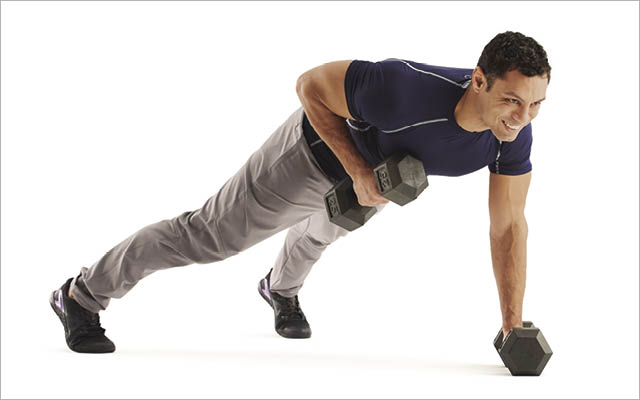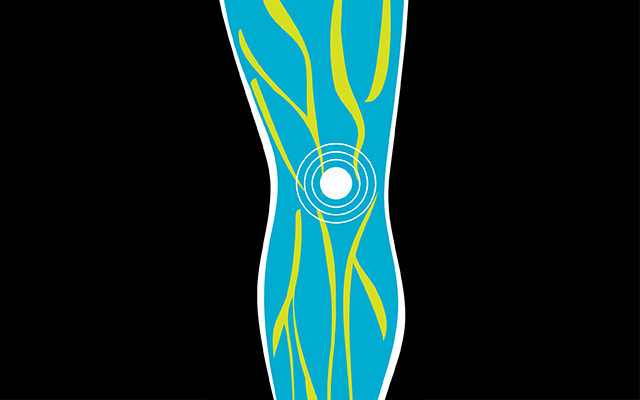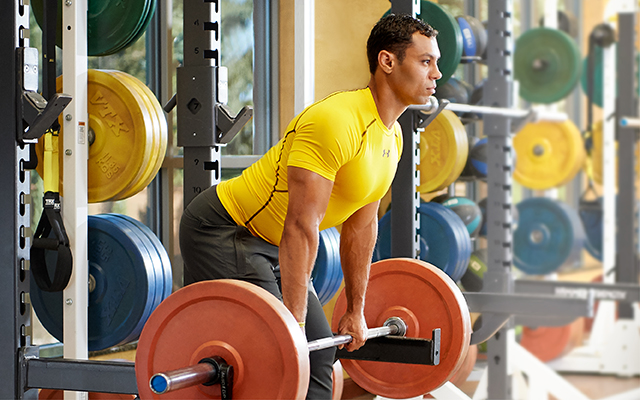Sit-ups and crunches have been the longtime go-tos for building core strength. But for many people, these and other moves that involve arching and rounding the spine are uncomfortable, painful, or simply out of reach because of physical limitations.
Despite their popularity, there’s nothing inherently magical about these moves — and in fact, they’re nearly useless if you can’t do them properly, says veteran trainer Tony Gentilcore, CSCS. There are dozens of other ways to train the core, which includes the visible outer layer of muscles we colloquially refer to as “six-pack abs,” as well as the deep-core muscles nestled within our torsos and the muscles in the back, chest, shoulders, hips, and glutes.
The key to crunch-free core training, says Mikey Mueller, NASM-CPT, USAW, Alpha coach at Life Time, is to stop thinking about moves to build core strength and start thinking about “anti”-moves. That’s because the core muscles are unusual in that their primary function is not to power movement but to prevent it. These muscles are built for this braking action — and they often brake without your realizing it (see “4 Antirotation Exercises to Build Core Strength” for examples). Walk on uneven surfaces and the core keeps your torso from twisting. Carry a heavy suitcase in one hand, and your core holds you upright.
The main work of the core, then, is resistance in one of three major forms:
- Anti-extension moves that help you resist bending backward.
- Anti-rotation moves that keep you from twisting.
- Anti-lateral-flexion moves that prevent side bending.
To build your functional core strength so you can handle these three anti-movement types, Gentilcore and Mueller suggest the following six exercises — plus challenging variations. As you strengthen your core and improve stability, you can add weight or progress to the tougher versions.
The Workout
Each time you exercise, says Mueller, focus on one of the three core anti-movement categories. If you work out three times a week, you’ll cover all three categories in one week.
Whatever your schedule, perform your movements after your other exercises: “You don’t want to tire out the core before your big lifts,” says Gentilcore.
On all six moves, start with the beginner’s reps or time and sets listed, and work up to the advanced recommendations over three to four weeks.
Anti-Extension Moves
Plank
- Assume a pushup position on your elbows and forearms with your feet slightly wider than shoulder width, balls of your feet on the floor, and body straight, from heels to the top of your head.
- Hold this position without moving for 15 seconds for two to three sets.
Work up to: Hold for up to 60 seconds for two or three sets.
Make it harder: From the starting position, slide your elbows forward, keeping your feet stationary on the floor, until your upper arms are at about a 45-degree angle to the floor. Work up to a 60-second hold.
Dead Bug
- Lie on your back with your lower back flat on the floor, keeping it there throughout the move.
- Raise your arms toward the sky and bend your legs and hips 90 degrees, with your lower legs parallel to the floor. This is your starting position.
- Extend your right leg out 6 inches from the ground and your left arm overhead as you complete a full exhale through the mouth. Allow a one- or two-second count to hover above the ground.
- Return to the starting position as you inhale through the nose.
- Repeat the movement with your left leg and right arm.
- Perform 10 reps per side for one to two sets.
Work up to: 15 reps per side for two or three sets.
Make it harder: Hold a stability ball between your hands and knees.|
Anti-Rotation Moves
Kneeling Pallof Press
- While kneeling on the floor, anchor a resistance band (or a “D” handle if using a cable machine) at shoulder height, and stand with your left shoulder pointed toward the anchor point.
- Grasp the band with both hands at chest level and find a kneeling position far enough from the anchor point to create light tension on the band.
- Brace your core and squeeze your glutes, then press the band straight away from your chest until your arms are fully extended. With control, return the band to your chest.
- Repeat for the desired number of repetitions, then perform the same exercise with the right shoulder facing the anchor.
- Perform 10 reps per side for one or two sets.
Work up to: 15 reps per side for two or three sets.
Renegade Row
- Assume a pushup position with your hands gripping two light dumbbells.
- Maintaining the pushup position, lift the dumbbell in one hand off the floor as high as possible while keeping that elbow close to your chest.
- Lower the dumbbell to the floor and repeat with your other hand.
- Repeat the movement, alternating sides.
- Perform five reps for one or two sets.
Work up to: Eight reps for two or three sets.
Make it harder: Perform a pushup between reps.|
Anti-Lateral-Flexion Moves
Farmer’s Carry
- Holding two heavy dumbbells or kettlebells by your sides, draw your shoulder blades back.
- Walk 25 yards for one or two sets.
Work up to: 50 yards for two or three sets.
Make it harder: Carry a single weight by your side; carry one or two weights at shoulder level; carry one or two weights with arms locked out overhead.
Offset-Glute-Bridge Dumbbell Press
- Sit on the floor, holding a medium-heavy dumbbell in your left hand, with your back braced against the end of a low weight bench.
- Place your feet flat on the floor in front of you, shoulder width apart.
- Lift the dumbbell to shoulder height.
- Push your feet into the floor and lift your hips upward so that your body forms a straight line from your knees to the top of your head. This is your starting position.
- Extend your right hand directly out to the side and make a fist.
- Keeping your core and glutes tight, press the dumbbell in your left hand upward until your arm is vertical.
- Slowly reverse the move, keeping your elbow close to your side.
Perform five reps per side for two sets.
Work up to: Five or six reps per side for three sets.
Make it harder: Increase the weight of the dumbbell without sacrificing form.
This originally appeared as “Core Training” in the April 2019 print issue of Experience Life.




This Post Has 0 Comments